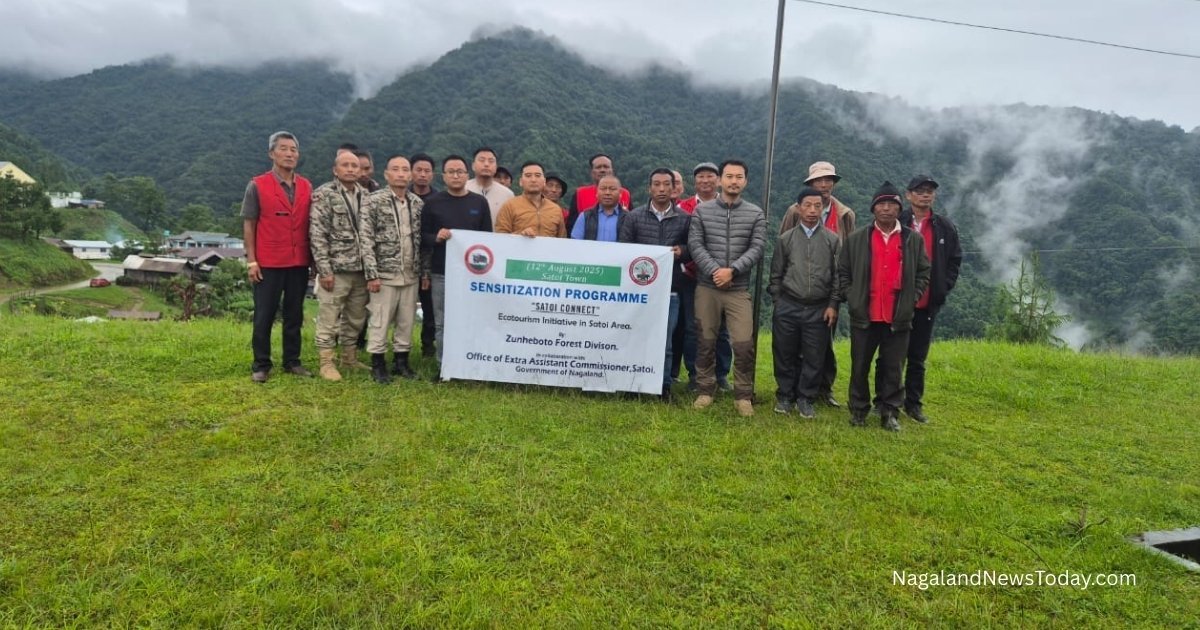Published by Aloto Naga | August 16, 2025
The Satoi Connect eco-tourism program was successfully conducted from August 12–13 in Satoi Town, Zunheboto District. It was organized by the Divisional Forest Office Zunheboto in collaboration with the Satoi Town Administration. The initiative brought together forest officials, student leaders, and community elders. This aimed to strengthen conservation awareness and promote eco-tourism opportunities in the region.
Building Awareness for Eco-Tourism
Organized under the leadership of DFO Zunheboto Obed Bohovi Swu, SFS, the sensitization program emphasized the ecological significance of the Satoi range. Swu noted that Satoi Connect aims to bridge policy with people. It does this by ensuring that conservation efforts are rooted in community values and local leadership. Also Read Surumi Servants of God: Global Missionaries, Pastors & Theologians
Highlighting the biodiversity of the region, Swu added that Zunheboto, positioned at the heart of Nagaland, could become a focal point for eco-tourism. This potential is heightened during the Hornbill Festival. The range connects key tourist destinations across districts including Phek, Wokha, Mokokchung, and Mon.
Community and Tourism Potential
Obangnener Jamir, EAC Satoi, underscored the importance of community participation in eco-tourism development. He stressed that local involvement is vital. It helps in bringing the ecological and cultural wealth of the Satoi range into Nagaland’s wider tourism map. Also Read Zunheboto International Youth Day Highlights HIV Awareness
Trekking Initiative and Conservation Commitment
As part of Satoi Connect, a two-day trekking program was held from Satoi Town to Tsutoho Village. The 5 km trail covered steep slopes and heritage pathways once used by forefathers. It provided participants with firsthand experience of the area’s rich biodiversity. Scenic views of Satoi Peak and Mt. Saramati were part of the trek. Historical sites such as the man-tiger passage were also highlighted.
Swu described the trek as both symbolic and practical. It linked remote communities through shared conservation values. It also reaffirmed the district’s commitment to eco-tourism. “The Satoi–Tsutoho trekking corridor holds immense ecological and cultural significance,” he added. He stressed its potential to attract both adventure seekers and nature lovers.
Towards Sustainable Tourism in Nagaland
The program concluded with a shared vision: to establish the Satoi range as a recognized eco-tourism hub. Another goal is to integrate it into Nagaland’s tourism network. By fostering collaboration between forest authorities and local communities, Satoi Connect aims to balance ecological preservation with sustainable tourism growth.

